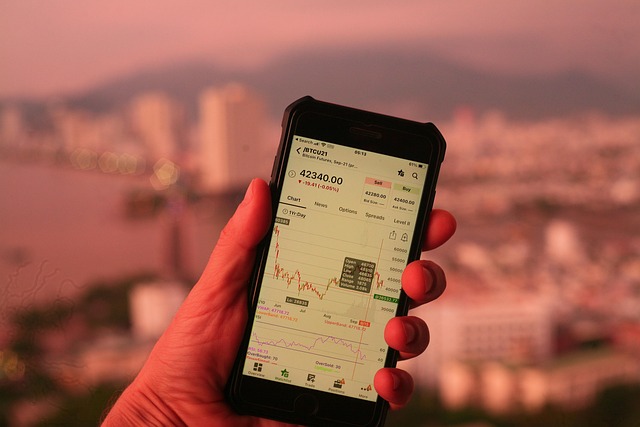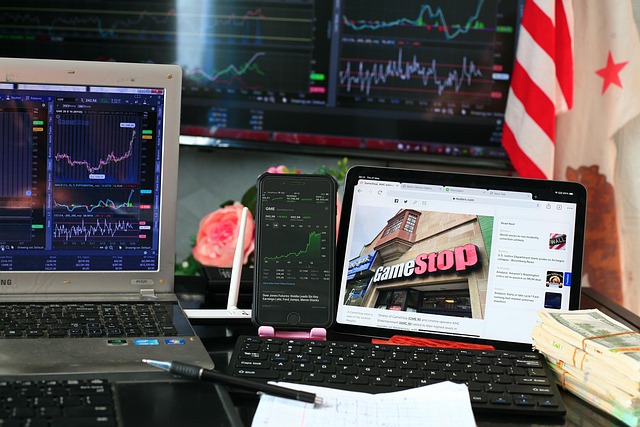Stop loss orders are crucial risk management tools for traders, limiting potential losses by automatically selling assets at a predetermined 'stop price'. Traders can customize strategies with 'stop-loss' or 'stop-limit' orders based on risk tolerance and market conditions. Effective stop loss levels vary by strategy: tight stops for short-term traders, farther stops for long-term investors. Managing risks through stop loss empowers traders to navigate diverse markets, preserving capital and maximizing profits. Developing a disciplined mindset reduces emotional biases and promotes better decision-making. Advanced stop loss techniques, like dynamic stops and multiple orders, optimize performance within various trading strategies.
In the volatile world of trading, managing risk is paramount. One indispensable tool in any trader’s arsenal is the stop loss order, a strategy that safeguards against significant losses. This article delves into the essentials of stop loss orders, offering insights on understanding their basics, setting effective levels tailored to diverse strategies, and managing risks through advanced tools and techniques. We also explore the psychological dimensions of consistent use and equip experienced traders with advanced stop loss strategies. Maximize your trading potential by harnessing the power of stop loss effectively.
- Understanding Stop Loss Orders: Basics Explained
- Setting Effective Stop Loss Levels for Different Strategies
- Tools and Techniques to Manage Stop Loss Risks
- Psychological Aspects of Using Stop Losses Consistently
- Advanced Stop Loss Strategies for Experienced Traders
Understanding Stop Loss Orders: Basics Explained

Stop loss orders are a fundamental risk management tool for traders, enabling them to safeguard their investments and limit potential losses. At its core, a stop loss order instructs your broker to automatically sell an asset at a predetermined price, known as the ‘stop price’. This pre-set level acts as a trigger, initiating a trade to minimize damage if the market moves against your position. Essentially, it’s like setting a safety net below your investment, ensuring you don’t lose more than you’re willing to accept.
Traders can customize their stop loss orders based on individual risk appetites and market conditions. They can choose between a ‘stop-loss’ order, which sells at the exact specified price, or a ‘stop-limit’ order, offering both a price limit and a stop price. Understanding these nuances is crucial for effective trading, as it allows traders to navigate volatile markets with confidence, knowing their positions are protected by well-defined stop loss strategies.
Setting Effective Stop Loss Levels for Different Strategies

Setting effective stop loss levels is a crucial aspect of risk management for traders, and it varies depending on your trading strategy. For short-term traders focusing on high-frequency trades, the stop loss should be tight to capture small price movements but also quickly adjust positions if the market reverses. This might mean placing it just below the recent swing low or a few pips above/below an entry point.
In contrast, long-term investors may set their stops farther from the entry price. For example, in trend-following strategies, a stop loss can be placed below a support level in an uptrend or above resistance in a downtrend. This approach allows for more leeway, as the trader aims to ride the overall market direction while limiting potential losses. Adjusting stop losses based on these strategic considerations ensures traders can navigate various market conditions effectively.
Tools and Techniques to Manage Stop Loss Risks

Managing stop loss risks is a crucial aspect of trading, and traders have at their disposal several tools and techniques to ensure effective protection against potential losses. One fundamental strategy involves setting specific trigger points, or stop-loss orders, which automatically initiate a trade exit when the market moves against the trader’s position. These orders can be set at a certain price level, known as the stop price, allowing traders to define their risk tolerance and limit potential downside exposure.
Additionally, traders can employ various techniques such as trailing stops, where the stop-loss point adjusts dynamically in line with the market movement, offering a more flexible approach to risk management. Combining these tools with careful analysis of market trends and indicators enables traders to make informed decisions, enhancing their ability to navigate volatile markets while preserving capital and optimizing potential profits.
Psychological Aspects of Using Stop Losses Consistently

The psychological aspect of trading is often overlooked, yet it plays a significant role in a trader’s success, especially when it comes to using stop losses consistently. Many traders struggle with the emotional attachment to their trades, which can lead to impulsive decisions and inconsistent stop loss placement. Fear of missing out (FOMO) or excessive greed can cause traders to hold on to losing positions longer than intended, ultimately deepening potential losses. Recognizing and managing these emotions is crucial for maintaining discipline in trading. Traders should aim to develop a consistent mindset where stop losses are seen as necessary risk management tools rather than failures or setbacks.
By adopting a disciplined approach, traders can transform their relationship with stop losses, enabling them to let go of positions with grace when the market moves against them. This psychological shift allows for better decision-making under pressure, ensuring traders adhere to their trading plan and avoid emotional biases that often lead to substantial losses. Consistent use of stop losses not only protects capital but also fosters a healthier mindset, encouraging traders to view each trade as a learning opportunity rather than a personal defeat.
Advanced Stop Loss Strategies for Experienced Traders

For experienced traders, advancing your stop loss strategies can significantly enhance trading performance. One advanced technique is the use of dynamic stop losses, where the stop level adjusts based on market conditions and risk appetite. This strategy allows for more flexibility, enabling traders to protect profits while allowing for potential growth. By employing technical indicators like moving averages or volatility metrics, traders can set stop losses that move with the market dynamics, ensuring a tighter grip on their positions.
Another sophisticated approach is the use of multiple stop loss orders, such as a trailing stop and a fixed stop. A trailing stop adjusts itself as the price moves in favor of the trader, securing profits while allowing for further gains. In contrast, a fixed stop remains constant, providing a safety net against unexpected market shifts. Combining these methods offers an elegant solution for managing risk, catering to different trading scenarios and strategies within the broader framework of effective stop loss management.
Stop loss orders are a fundamental tool in trading, enabling traders to manage risk and protect their investments. By understanding the basics, setting appropriate levels, utilizing management tools, and addressing psychological barriers, traders can effectively incorporate stop losses into their strategies. Advanced techniques offer experienced traders further opportunities to refine their approach and navigate the markets with enhanced precision. Remember, a well-executed stop loss strategy is essential for consistent trading success.
